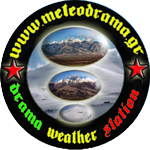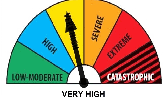GFS Precipitation (next 3-192 hrs Run)
In meteorology, precipitation (also known as one of the classes of hydrometeors, which are atmospheric water phenomena) is any product of the condensation of atmospheric water vapor that is pulled down by gravity and deposited on the Earth's surface. The main forms of precipitation include rain, snow, ice pellets, and graupel. It occurs when the atmosphere, a large gaseous solution, becomes saturated with water vapour and the water condenses, falling out of solution (i.e., precipitates). Two processes, possibly acting together, can lead to air becoming saturated: cooling the air or adding water vapour to the air. Virga is precipitation that begins falling to the earth but evaporates before reaching the surface; it is one of the ways air can become saturated. Precipitation forms via collision with other rain drops or ice crystals within a cloud.
 |
















